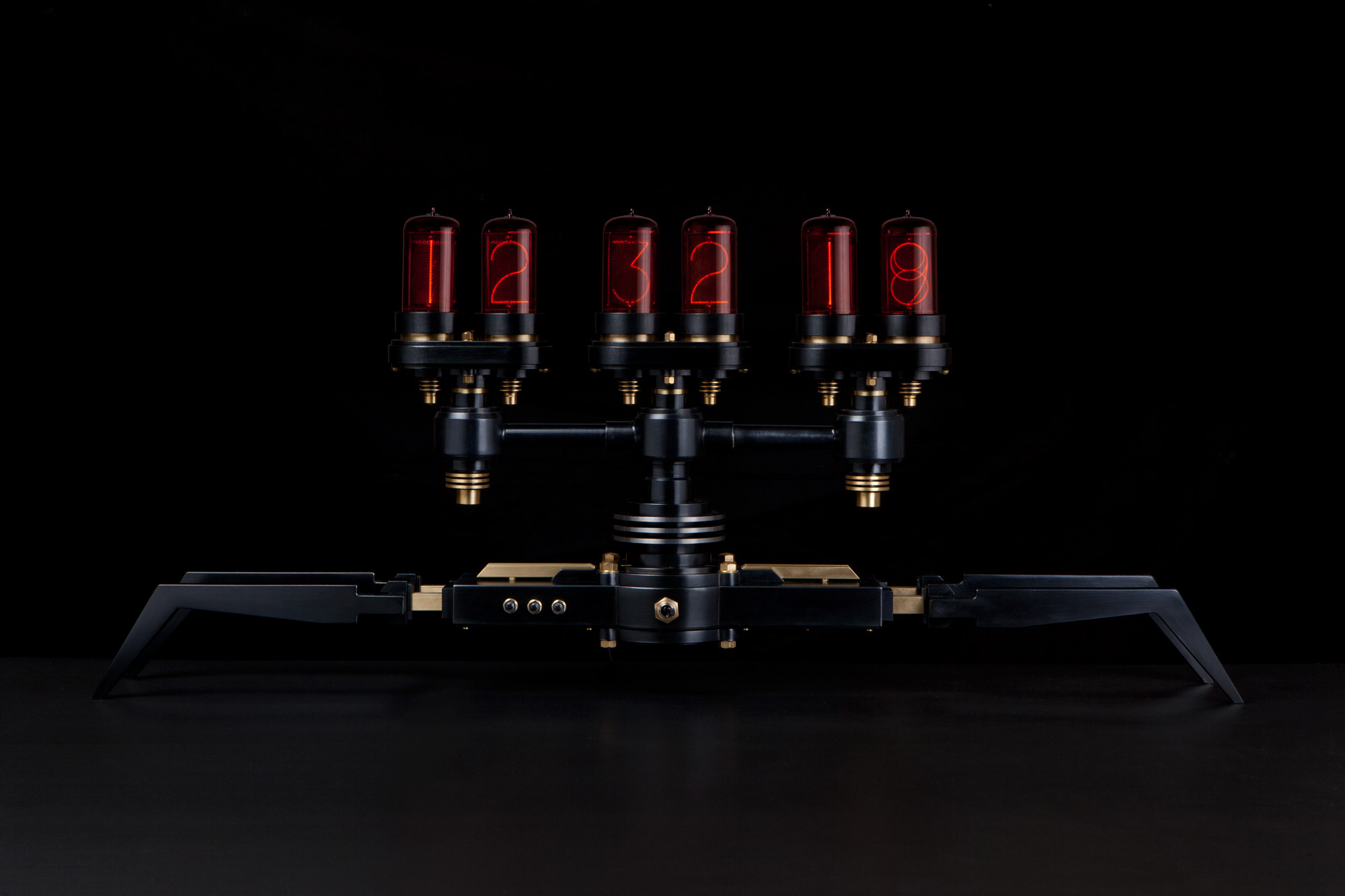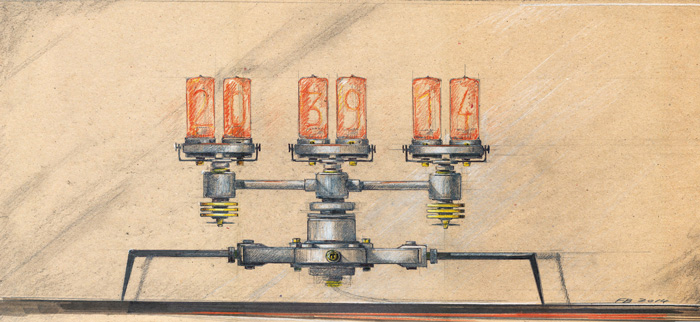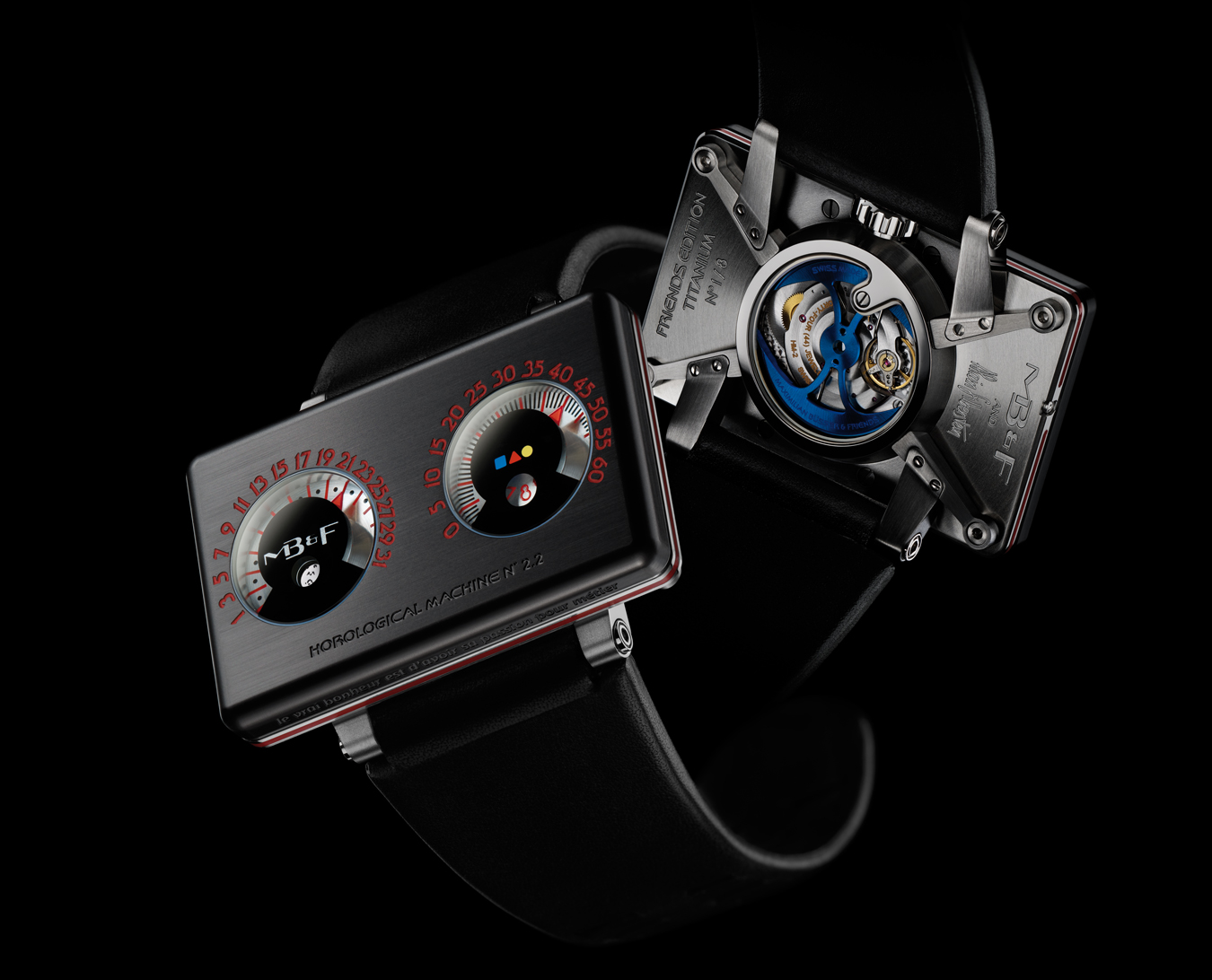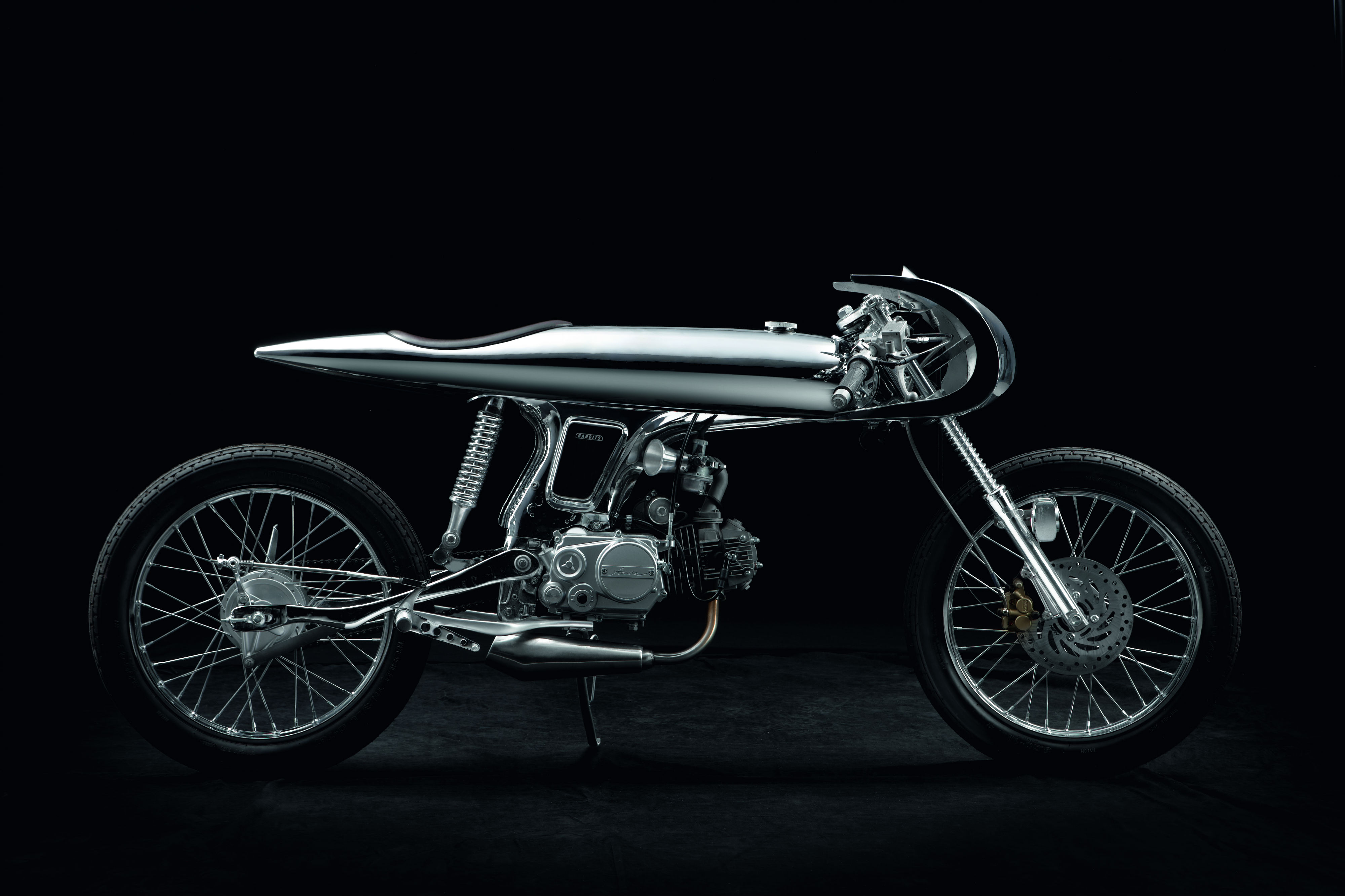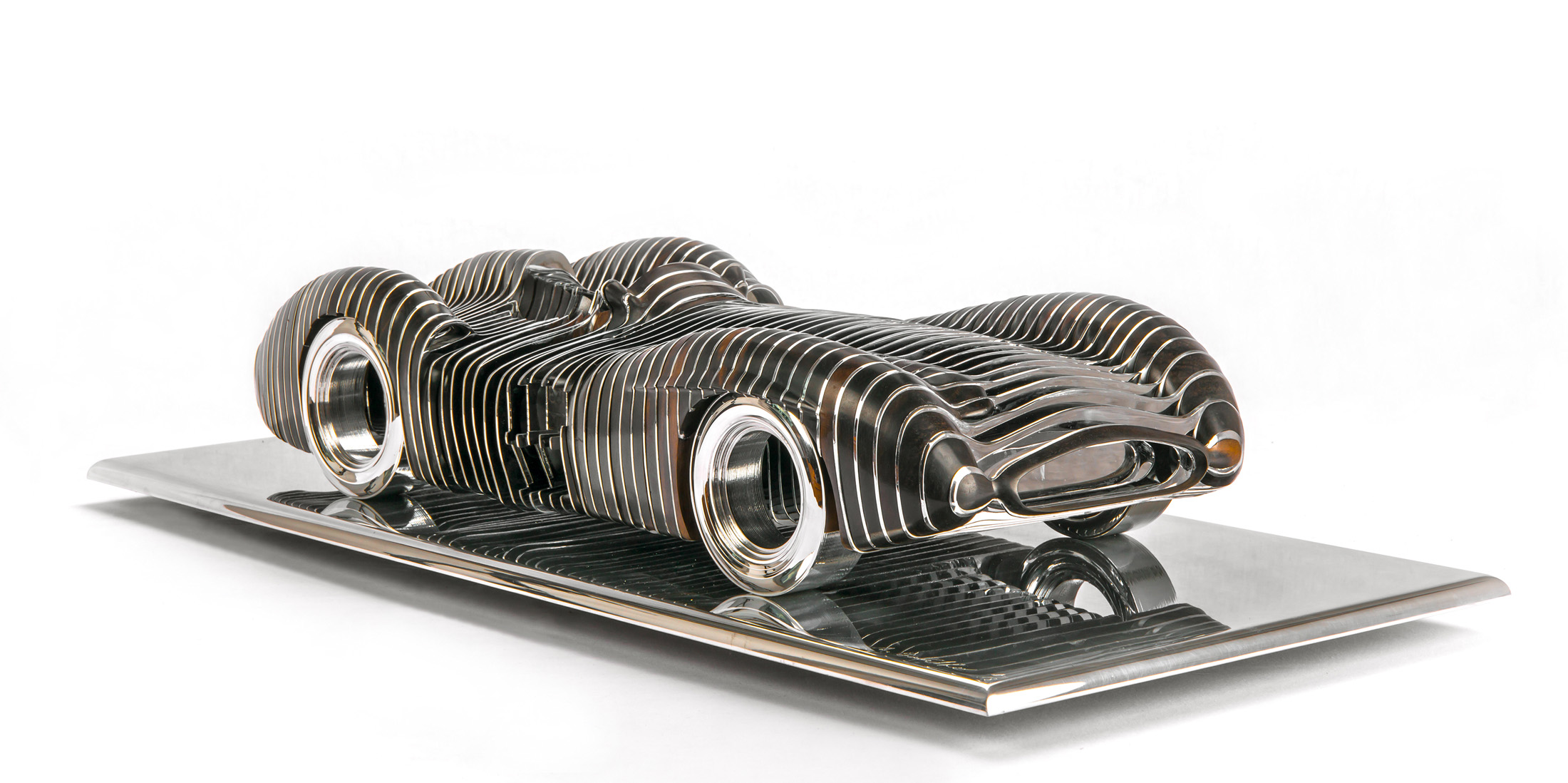M.A.D. Gallery’s Nixie Machine
Time, encapsulated.
A quick glance at Nixie Machine might have you wondering whether you’ve stumbled backwards in time—or forwards. The clock, conceived by German designer Frank Buchwald, draws its name from the six Nixie tubes (also known as cold cathode displays) sitting atop its sculptural steel body. The tubes are separated into three pairs and display the precise time (hours, minutes, seconds) or date (day, month, year) by way of a GPS and DCF77 receiver, a longwave German time signal that provides the automatic time and date setting—a technology dating back to the time of the Cold War. Buchwald, who studied design at the University of Arts in Berlin before working as a freelance artist and science fiction illustrator, handcrafted each of the machines’ 350 components out of raw metal before hand-polishing the brass and burnishing the steel.
The device is part of a larger collection of horological machines available for purchase in Switzerland’s M.A.D. Gallery, just a stone’s throw from the MB&F offices (the brand is the gallery’s parent company and its innovative timepieces are also sold in the space). At M.A.D., Nixie Machine joins the ranks of many other kinetic objects d’art—Mechanical Art Devices—including a brass and walnut Applause Machine. Each is an icon of the labour-intensive work required to construct these inventive pieces. The Nixie Machine’s construction is handled solely by Buchwald, which means that he is only able to make about six machines per year (each is numbered and signed). Buchwald refers to the limited-edition machine as an “altar of time”.
Photos courtesy of MB&F.
Watch Nixie Machine at work:


